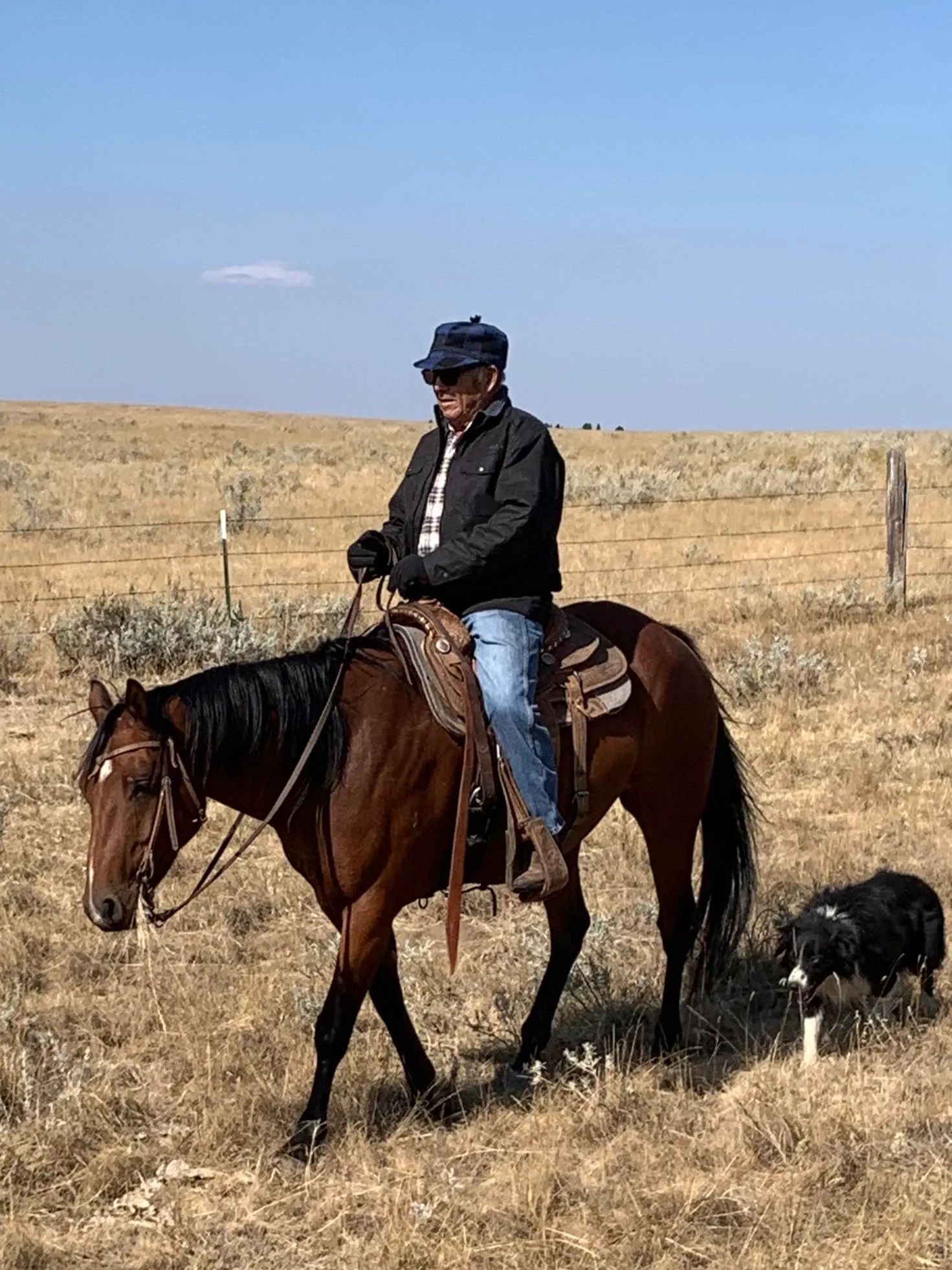
LIVING INDUCTEE
JOHN WILL SMALL
DISTRICT 7 - YEAR 2026
John Will Small was born August 29, 1933, to Tom Small and Josephine Rondeau. His father, Tom, worked in ranching, and followed cattle herds north from Texas to Montana, where he married Josephine, a Northern Cheyenne and Mexican woman. Of Northern Cheyenne, Mexican, Irish and Scottish descent, John was born and raised on the southern border of the Northern Cheyenne Reservation. He grew up in a small log home on Dry Creek, near the Kirby community, where he has remained throughout his life.
John was the youngest boy of 13 siblings. After the passing of his mother at the age of four, John was raised by his father and cared for by his older brothers. He received the majority of his short academic education as a student at St. Labre Catholic Mission in Ashland, Montana, which was established as an Indian boarding school. After a short stint at the Northern Cheyene Tribal School in Busby, Montana, he left formal education during the eighth grade.
John day-worked for locals on and off the reservation—Ray Homes, Elmer “Slim” Kobold, and the Hope Ranch, to name a few. John then went on to serve in the U. S. military, though his service was cut short in order to return home and care for his ailing father. In 1957, he married Betty Pilkington, with whom he had three children—Leslie, Peggy, and Jonie.
A devout Catholic, John was nicknamed Preacher John by his brothers, because he never missed church services and read from the Bible nightly. He had high praise for how the priests and nuns cared for him during his time at St. Labre, and found comfort and inspiration in his faith journey.
John was a highly successful rodeo cowboy, competing in saddle bronc riding, bulldogging, calf roping, team tying, and wild horse racing. He enjoyed traveling to rodeos and competing alongside his brother, Clinton. John won many championships throughout his rodeo career, at some of the biggest rodeos in the nation–Denver, Chowchilla and Salinas. He had repeat wins at the Sheridan WYO rodeo, and at the time of leaving rodeos to serve in the military, he was leading the Northwest Ranch Cowboy Association (NRCA) standings. Together, he and Clinton built a Small family legacy that continues on the rodeo circuit to this day. John guided his daughters and many members of the Small family during their rodeo careers, and went on to cheer for his grandsons, Brett and Casey, in the arena.
John was a skilled and thoughtful businessman. As his cattle herd grew, he led the way in finding resources to expand, developing relationships with banks at a time when lending institutions were leery of funding Indian-owned operations. In particular, John built a strong relationship with Little Horn State Bank originally established in Wyola, Montana. This was made possible through his connection with Alice Greenough, whom he met while competing at rodeos in the area, where a conversation began regarding cattle ranching. In turn Alice invited John to come to the bank and discuss the possibility of an operating loan to increase his cattle numbers. Through that opportunity, John secured a loan to expand on his vision.
John later served in a leadership role on the Hardin Little Horn State Bank Board Directors assisting other farmers and ranchers applying for loans, to start their own ranching operations. Thanks to his outstanding work ethic and business acumen, John became one of the most successful ranchers not only within tribal communities, but in all of southeastern Montana, paving the way for generations to come.
John has always been dedicated to the Western way of life, being of service to his community and uplifting the ranching industry. He was instrumental in the development of the Northern Cheyenne Livestock Association (NCLA), and served as its president. The NCLA was formed as an effort to return Northern Cheyenne grazing land back into the hands of tribal members. After the federal government established the reservation in 1900, Northern Cheyenne tribal members were limited to only the 160 acres allotted to them by the Dawes Act, and remaining lands were open to lease to non-Native operators. Over time, Northern Cheyenne ranchers put together cattle numbers and grew their herds, and the entirety of grazing lands on the reservation were returned to tribal members.
John was known for his work ethic, always putting in a full day’s work, sometimes ending long after dark. He was nicknamed “John One More Ridge,” as he was always long trotting through pastures to check where a cow might be hiding. Well-read in the cattle industry and cow savvy to boot, he was one of the first to crossbreed the smaller framed early Angus with Simmental cattle, creating a big rangy cow that produced top calves in rough country. John has always been a cowboy through and through, working cattle horseback, and roping and dragging livestock to the branding fire well into his eighties.
He was a lifelong learner, self-educated on the agricultural industry and enjoyed reading biographies and history books. John explored the world, visiting all the places he read about, including the Great Wall of China and Cuba where he witnessed Fidel Castro’s funeral. He always encouraged others to pursue the opportunity of higher education. He felt strongly that people needed to have options to choose from.
John has led a truly remarkable life, full of inspirational accomplishments befitting of cowboys of the highest caliber. He ran cattle for 72 years, beginning in 1951 and continuing until his entire herd was sold in 2023, due to health issues in his older years. Throughout his life, John has led by example and served as a role model and mentor for countless people in rodeo and ranching communities. His ripple effect is bigger than we know, and collectively we will benefit from his legacy for many decades to come.

